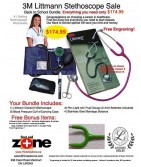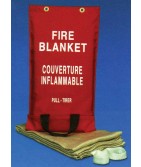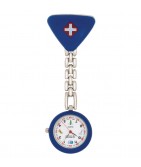 Nurses are looking for a personal stethoscope as an essential accessory for their daily work. These days, a person who wears a scrub and carries a stethoscope is no longer necessarily a doctor; she could easily be a nurse. A good, accurate and reliable stethoscope is an important piece of equipment for every nurse because it is she who examines and interacts with the patients most of the time. So here are some advices on how to choose the best stethoscopes for nurses.
Nurses are looking for a personal stethoscope as an essential accessory for their daily work. These days, a person who wears a scrub and carries a stethoscope is no longer necessarily a doctor; she could easily be a nurse. A good, accurate and reliable stethoscope is an important piece of equipment for every nurse because it is she who examines and interacts with the patients most of the time. So here are some advices on how to choose the best stethoscopes for nurses.
There are two major types of stethoscopes: the traditional acoustic device and the relatively newer electronic stethoscopes. The former is still more widely used because it is cheaper, but the latter is catching up because its price is reasonable. It is possible that there will soon come a day when acoustic stethoscopes, which are so prevalent today, will become an object of rarity.
How to choose an acoustic stethoscope:
An acoustic stethoscope consists of earpieces (also called ear tips), binaurals, tubing and a head or chest piece. Binaurals are the curved metal pieces that connect the earpieces with the tubing. The chest piece is usually a diaphragm, but it could also be a combination of a diaphragm and a bell.
Here are the things you should check when choosing an acoustic stethoscope.
- Earpieces: These are available in both soft and hard materials and some stethoscopes even come with both types. Check the earpieces to find out if they fit perfectly in your ear (everyone has a uniquely shaped ear!) and block out all the extraneous sounds. Also, check to make sure that the pieces (tips) are easy to take out for cleaning and replacement.
- Tubing: The tubing is normally 65 to 70 centimeters (26 to 28 inches) long. Some stethoscopes have two tubes running parallel to each other while others have large tubes with two channels. Generally, the single tube is better as it captures less ambient noise. When looking at the tubing, make sure that it is thick and well insulated. Put the earpieces in your ears and listen to the sound as you rub the tubing near the chest piece with your thumb and forefinger. If you can hear a loud enough noise, then it means it is well insulated.
- Head or chest piece: The stethoscope head is usually a combination of a diaphragm and a bell, both with vinyl coating around the rims to prevent the cold metal parts from coming into contact with the patient's body. Put the earpieces in your ears and press the head lightly over your heart to listen to the low-frequency murmur and then press it hard to listen to the high frequency murmur. If you can hear both well, then it's a good quality stethoscope.
How to choose an electronic stethoscope:
An electronic stethoscope looks similar to an acoustic stethoscope, but it is battery operated. It has a digital display that shows battery status, volume level and heart rate. Some of the latest devices even come with infrared devices such as Bluetooth to connect with other electronic devices such as a computer, tablet, cell phone or another electronic stethoscope. One big advantage of electronic stethoscopes is that you can magnify the sound volume by 24 times. You may also record a sound for playback and assessment at a later time.
When checking an electronic stethoscope, listen to both low intensity and high intensity murmurs by pressing the head against your heart, check the sound volume magnification, check to see if it has a low battery power warning system and connectivity to other electronic devices.
At The First Aid Zone, we offer high-quality acoustic and electronic stethoscopes. We are an authorized dealer of Littmann stethoscopes, widely considered to be the best stethoscopes for nurses around the world. Browse our selection online and find the right stethoscope for your needs.



























